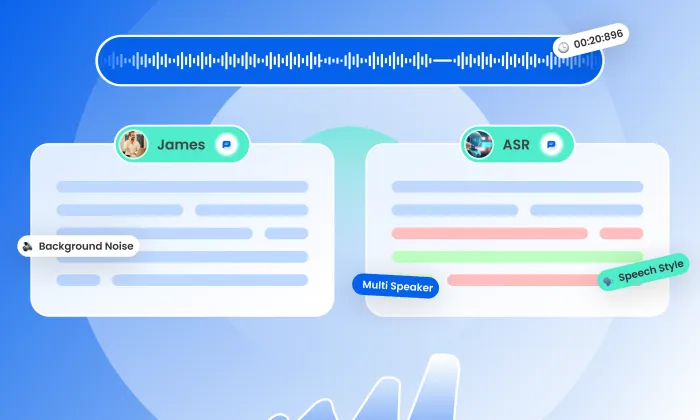What is a good baseline WER to expect from an automotive speech model trained on a general vs. an in-car dataset?
Speech Models
Automotive AI
WER
In the realm of automotive AI, ensuring accurate speech recognition is paramount. This accuracy is often measured using the Word Error Rate (WER), a crucial metric that evaluates how well a speech recognition system transcribes spoken language. Understanding the WER of models trained on general versus in-car datasets provides insights into optimizing automotive speech systems.
What is WER and Why It Matters
WER is calculated by dividing the number of transcription errors (insertions, deletions, and substitutions) by the total words spoken. For automotive applications like in-car voice assistants, a low WER is vital for ensuring reliable interaction with navigation and infotainment systems.
- General Datasets: These datasets include diverse spoken languages from various contexts, such as phone conversations and podcasts. When used in automotive scenarios, models trained on general datasets typically achieve a baseline WER of around 20% to 30%.
- In-Car Datasets: These specialized datasets account for the unique acoustic environment of vehicles, including background noise from engines and varied microphone placements. Consequently, models trained with in-car datasets can reach a WER as low as 5% to 15%, significantly improving speech recognition accuracy in vehicles.
Why In-Car Datasets Are Essential
- Acoustic Variability: Vehicle interiors present complex soundscapes due to factors like engine noise and road texture. General ASR models often struggle with these, leading to higher WERs.
- Contextual Speech: In-car interactions frequently involve specific commands, such as “turn on the heater” or “navigate to home,” which require models to understand domain-specific language.
- Microphone Placement: Microphones in vehicles can be dashboard-mounted or embedded in headrests, each introducing different echo profiles. In-car datasets prepare models to handle these variations effectively.
How Top Teams Approach the Problem
Leading automotive brands optimize WER by leveraging in-car datasets. Here’s how they approach this challenge:
- Data Diversity: Incorporate varied speech samples, covering different demographics and accents to ensure broad generalization.
- Real-World Testing: Evaluate models in actual driving conditions, testing against scenarios like high-speed and heavy traffic.
- Iterative Training: Employ continual learning strategies, allowing models to adapt with new data, progressively lowering WER.
Real-World Impacts & Use Cases
- Luxury EV Brands: By training multilingual voice assistants on in-car datasets, luxury electric vehicle manufacturers have achieved WERs below 10%. This enhances the user experience, allowing seamless interaction with vehicle systems.
- Autonomous Taxi Services: Self-driving taxi companies use emotion recognition models refined with in-car speech data, enhancing service quality by understanding passenger emotions.
- Tier-1 OEM Solutions: Original equipment manufacturers develop custom datasets for specific vehicle models, reducing WER and improving the reliability of voice commands across diverse driving conditions.
The Path Forward with FutureBeeAI
Investing in specialized, context-aware datasets is crucial for advancing automotive AI. FutureBeeAI provides tailored in-car datasets that enhance model performance, build user trust, and expedite product deployment while minimizing retraining costs.
For automotive AI projects requiring specialized datasets, engage with FutureBeeAI to access comprehensive, real-world data solutions. With our expertise in automotive AI datasets, we can support your journey to achieving superior voice recognition capabilities.
What Else Do People Ask?
Related AI Articles
Browse Matching Datasets
Acquiring high-quality AI datasets has never been easier!!!
Get in touch with our AI data expert now!








